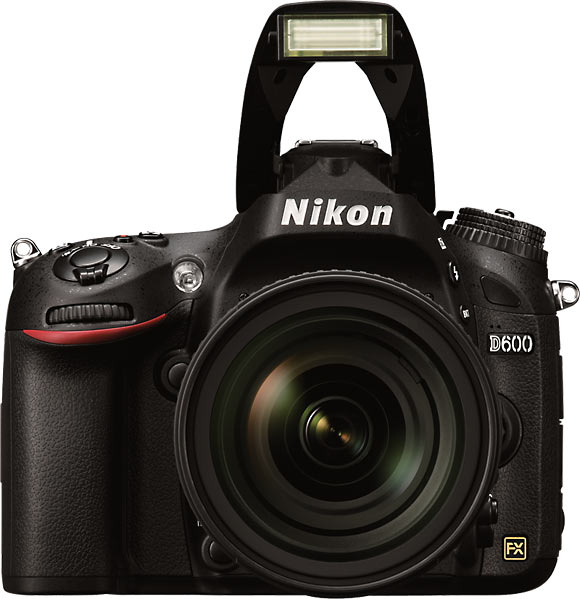Review Date: October 8, 2012
Category: Serious to Advanced


Photoxels Gold Award – DSLR
USER’S EXPERIENCE
Monday, September 24, 2012 – Here’s what I receive in the box:
- Nikon D600
- Body Cap
- Eyepiece Cap
- No memory card
- LCD Monitor Cover
- Accessory Shoe Cover
- Shoulder Strap
- Li-Ion Battery EN-EL15 7.0V 1900mAh 14Wh with terminal cover
- Battery Charger MH-25 with your choice of using a direct-to-wall plug or power cord
- Interface Cable: USB
- Instruction Manuals (English and French): Quick Guide, User’s Manual
- Software CDs: ViewNX 2
- AF-S Nikkor 24-85mm F3.5-4.5 G VR Lens w/lens hood, lens cap, rear cap, and travelling bag
I have been using mirrorless DSLRs for an uninterrupted amount of time and picking up the Nikon D600 was quite a revelation. Yes, the D600 is Nikon’s smallest and lightest full-frame DSLR but it is still heavy compared to a mirrorless. However, it was not so heavy that I did not take to it right away. The handling is superb and it felt quite good in fact to be able to hold a camera that fit snugly in my hands. No need for finger contortions or fidgeting with tiny buttons. The D600 is a beautifully designed camera. It features magnesium alloy top and rear construction and so feels solid and tough. From the feel of the texture to the tactile feel of the control buttons, this weather-sealed camera feels professional grade and inspires confidence.
The optical viewfinder is larger and brighter than on a DX-format DSLR. Half-press the shutter release button and the Phase-Detection AF immediately snaps the image into focus. Just like that. No hunting to and fro.
Live View is tremendously improved on the D600 (and you’ll need it when shooting movies). It is bright, smooth and immensely usable so much that I used it about half of the time. You can magnify the screen to get a better view, though the image looks pixelated if magnified too much. You can use all shooting modes using Live View (yes, you can use program shift, shutter-priority, aperture-priority and full manual, changing all exposure settings in viewfinder or Live View modes). You cannot, however, preview depth of field; you’ll have to switch back to using the optical viewfinder for that. The screen unfortunately does not tilt, requiring maintaining a very tiring posture when using the camera on a tripod and having to stoop to peer at the screen or peer through the viewfinder. Unlike on the D800, the LCD does not gain up in low light. Live View uses contrast-detect AF, but that’s also pretty fast and precise in both good and low-light. It is only in extreme low-light that it struggles to lock focus. There is no eye-sensor that will automatically switch between viewfinder and Live View.
TIP: If you want the camera to focus and meter at the extreme edges of the viewfinder (which is not possible using the viewfinder), switch to Live View. Then, simply use the Multi selector to reposition the AF Frame. Press OK to immediately return to center.
TIP: In Live View, you can resize the AF Frame, Press the AF-mode button on the side of the lens barrel and rotate the Sub-command dial.
TIP: You cannot change aperture during movie recording. You can only set the aperture you want to use (in Aperture-priority mode) in stills photography mode, then switch to Movie mode to keep that aperture. The camera changes the ISO as required to obtain correct exposure.
Movie mode also uses Contrast-Detect AF and will [sometimes] refocus as you zoom when using AF-F. The manual focus and manual zooming noises will be clearly picked up by the sensitive microphone. An optional external stereo microphone can be used to avoid picking the camera sounds.
Performance is fast and response is instant. Focusing in low-light is very fast and precise. For those who prefer to manual focus, the smooth manual zoom ring on the Nikon lens makes for fast focusing. In low-light, you will be relying on the Focus indicator to tell you when focus lock is achieved. The only problem I encountered was in extreme low-light (as in there is almost no light) when the AF-assist illuminator did not seem to help too much when using contrast-detect AF; phase-detection AF seems to lock focus better in that situation. The extra large 3.2-in. LCD screen has a high 921,000 dots resolution and it shows in the legibility of the text and image playback.
You can pretty much customize the D600 to work the way you like it. Besides PASM modes, there is an AUTO mode and even Scene modes. So, if you are a point-and-shoot photographer itching to move to a full-frame DSLR, just set the D600 to AUTO and shoot!
However, do consider that the D600 User’s Manual, at 340 pages thick, is larger and thicker than many of the ultra compact digicams you may be currently using! That should give you an idea of the complexity and real power under the hood of the D600.
TIP: You can use a flash sync speed of up to 1/250s using the built-in pop-up flash. You have to set that up in the Menu: [Menu – Custom setting menu – e Bracketing/flash – e1 Flash sync speed 1/250 s (Auto FP). Also, equipped with the optional SB-910, SB-900, SB-800, SB-700, and SB-600 flash units, you can sync using a shutter speed as fast as 1/4,000 s. This allows you to use flash, a fast shutter speed and a large aperture in broad daylight for nice out-of-focus backgrounds when shooting portraits.
The Nikon D600 has a MUP (Mirror UP) function. The mirror can be raised to minimize blurring caused by camera shake. Set the Release Mode Dial to MUP, frame and compose your picture, half-press the shutter release button to lock focus, then depress the shutter release button all the way and release it to lock the mirror up. Wait a few seconds for everything to settle down, then depress the shutter release button a second time to take the picture. Of course, your camera should be on a sturdy tripod, and you should be using an optional remote cord to release the shutter, otherwise it kinds of defeat the whole purpose of using MUP.
The self-timer can be set to release after 2, 5, 10 or 20 sec. and you choose the delay via a Custom Setting in the Menu (Custom Setting Menu – c Timers/AE lock – c3 Self-timer). I love the 5 seconds, which is not too fast and still gives the camera time to settle down after you’ve pressed the shutter release button. Only the one selected setting is then available when you switch to self-timer mode. It would have been nice to be able to use the Main command or Sub-command dial to simply dial in a desired delay time.
TIP: If you favor a 1s, 2s or 3s self-timer, and you will be using the camera in that mode for an extended shooting session, you can leave the camera on Single Frame and set the Exposure delay to 1s, 2s or 3s [Menu – Custom Setting Menu – d Shooting/display – d10 Exposure delay mode – Off, 1s, 2s, 3s]. Just remember to reset it to Off or you’ll be scratching your head why your camera has suddenly and quite mysteriously acquired a shutter lag.
As on other Nikon DSLRs, the shutter release button is so soft and sensitive. I don’t know if it’s good or bad, or just a matter of getting used to it, but almost everytime I try to half-press, I end up taking a picture. If you come from the world of the small sensor camera, you’ll need to be aware of a couple of things. Not only will the D600 feel heavy and requires that you use both hands to hold it steady, but I find that even with optical image stabilization of the kit lens, I have to be very careful with the shutter release to avoid camera shake. You also need to be aware of the aperture you use: if you use a large aperture, you’ll get a wonderful narrow depth of field but it also means that you have to focus accurately on your subject or risk an out of focus picture.
What I like about the D600:
- Excellent image quality from ISO 100 to ISO 800.
- Lots of external dials and buttons mean less reliance on Menu.
- Very good build.
- High resolution LCD screen.
- Live View is very usable.
- Optical viewfinder (with 100% frame coverage) for those who need one.
No review is complete without a couple of improvement suggestions:
- Put in a tiltable LCD (no serious camera should be without one).
- The LCD should gain up in low-light.
The Nikon D600 is a professional-grade DSLR with full exposure flexibility and excellent image quality up to ISO 800. The 340 pages of the User’s Manual give you an indication as to the complexity and versatility you can look forward to with the D600. Anyone thinking to “move up” to a DSLR from the world of compact non-DSLR digital cameras may want to consider carefully if they are willing to invest the time and effort required to learn and thoroughly master this camera. If they are, the Nikon D600 promises to reward them with excellent images and a world of full-frame digital photography to enjoy for years to come. The Nikon D600 is the camera to buy if you are considering moving up from an APS-C to a full-frame DSLR. Highly recommmended.
Next: Nikon D600 QuickFact Sheet / Buy


















